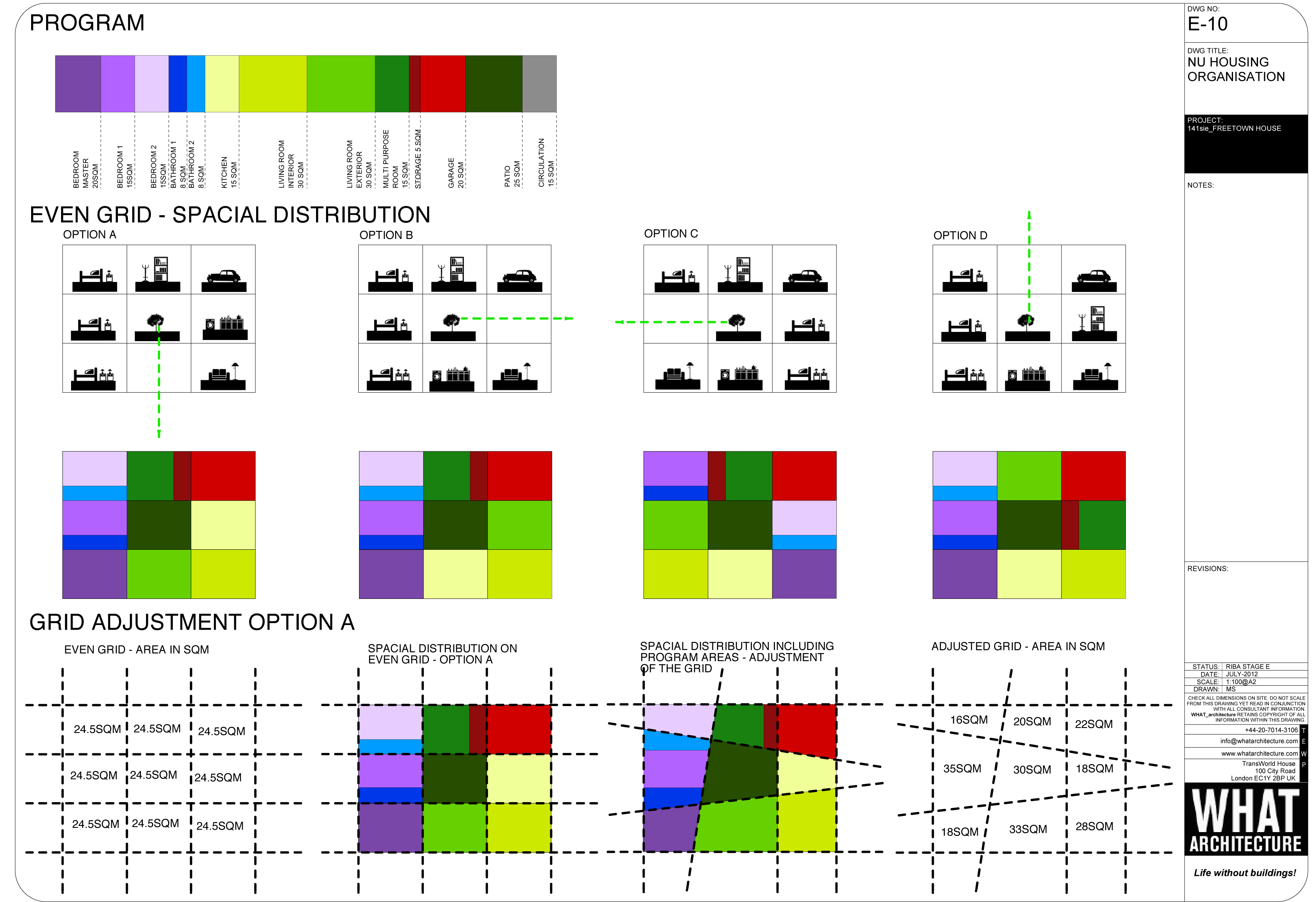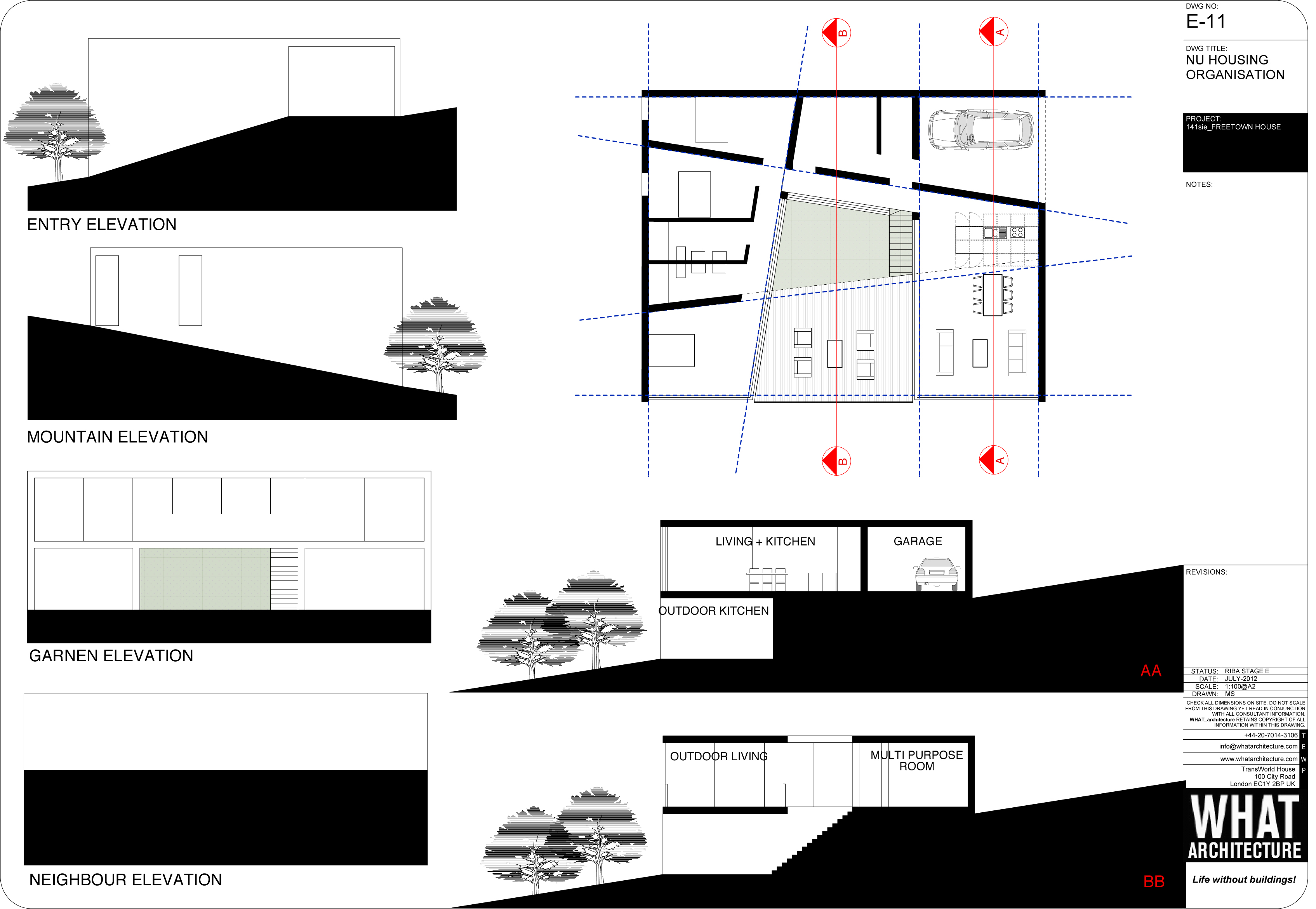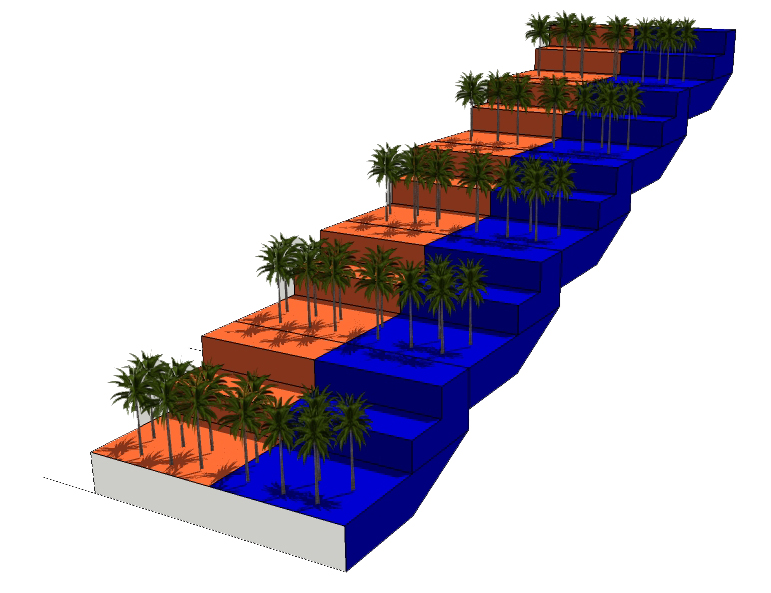141sie_FREETOWN FASHION
What Freetown might lack in high street shopping, it makes up for in street couture. The streets are teeming with some of the most resourceful, brave and outrageous fashion decisions ever made. In a country so commonly associated with civil war and blood diamonds… Jo Dunlop, an Australian, felt inspired to show a different side to Sierra Leone and reveal an unlikely fashion hotspot. We hope that the FreeTown built environment follows suit. For our FreeTown Housing project: go to 141sie_Fashion Architecture Race!

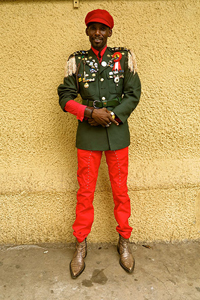
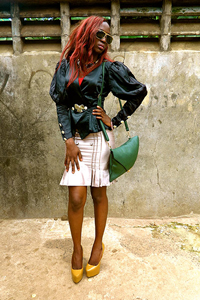
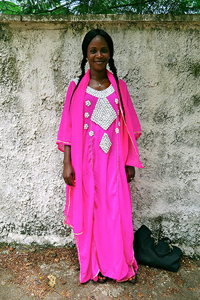
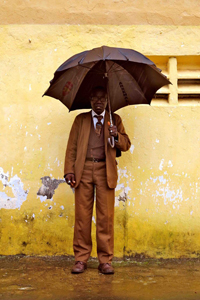
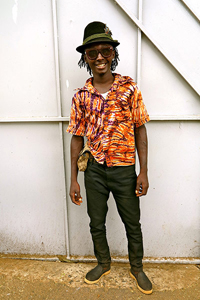







141sie_AFRICANISM
In shifting one’s gaze from the computer screen to the Old Street roundabout outside, one could reflect that the Sierra Leone project initally offered the intriguing possibility of locating common ground between here and there, between Africa and Europe. Would this common ground be merely based upon the transnational movement of architectural ideologies? Ideas either exported (European modernism operating on an African site) or imported (summarily, Africanism in Europe)? In the worst traditions of architectural ambition, perhaps the initial intrigue over inflated the project and 2y later the parameters could be simply redrawn as: London in Freetown.
Back to the screen. One recent FB project comment recalled the uncomfortable colonialist implications that are attendant with architecture. Our commentator questioned the legitimacy for an exported modernism to house the “natives” (sic)? Draping a building in boubou or photoshopping in some ‘natives’ doesn’t localise a jpeg after all. Without doubt the conventional tools of Western architecture are insufficient to address the challenges which confront foreign fields. Africanism demands a different approach:
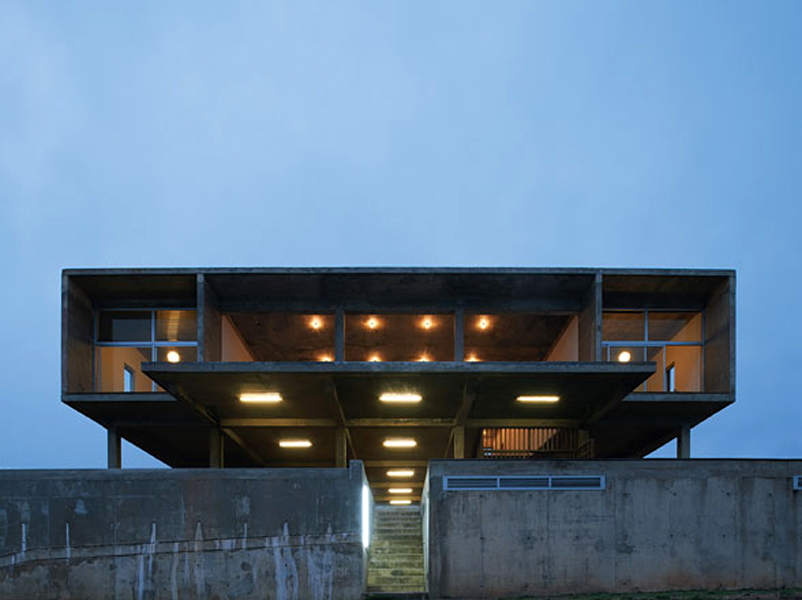
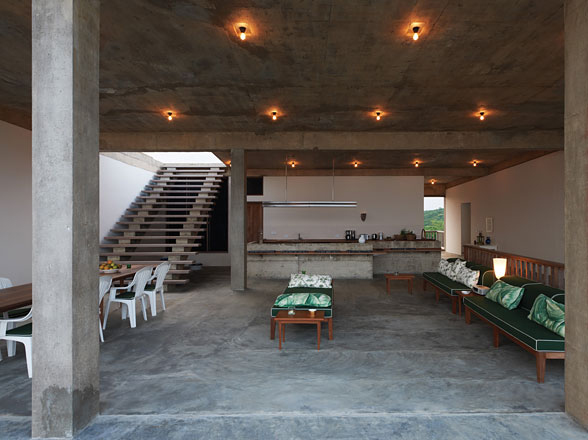
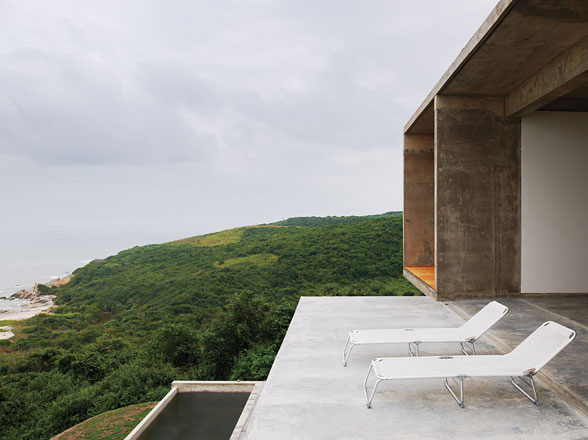 German artist Carsten Holler’s house in Ghana.
German artist Carsten Holler’s house in Ghana.
- Greater multi-disciplinary, particularly anthropological, involvement;
- Embrace African scholarship;
- Creativity to unlock convention


 German artist Carsten Holler’s house in Ghana.
German artist Carsten Holler’s house in Ghana.
141sie_Freetown boubou
Given the complexity of designing cities, master planning sometimes appears as the reduction of urbanism to a level of pattern making, programming, land-use planning. Parametric or otherwise. Abstraction itself is useful in giving an overview. Whilst considering the pattern of cities and ‘patter nation’ as visual means to analyse foreign countries, we wondered if the boubou patterns of West Africa as we see so often here in our office based in central East London (down the road from Dalston, across the river from Peckham…) operate as a means to understanding the divergent aesthetic of urban texture: the fabric of a West African city site composed as Boubou. After all, boubou is a wax printed cloth produced in that Euro-nation today upheld as a model of sustainable urbanism: Holland. In the best pattern-nation urban fabric tradition, WHAT_architecture started imagining the Freetown imprint. Modelled by Nde, photographed by Pablo.
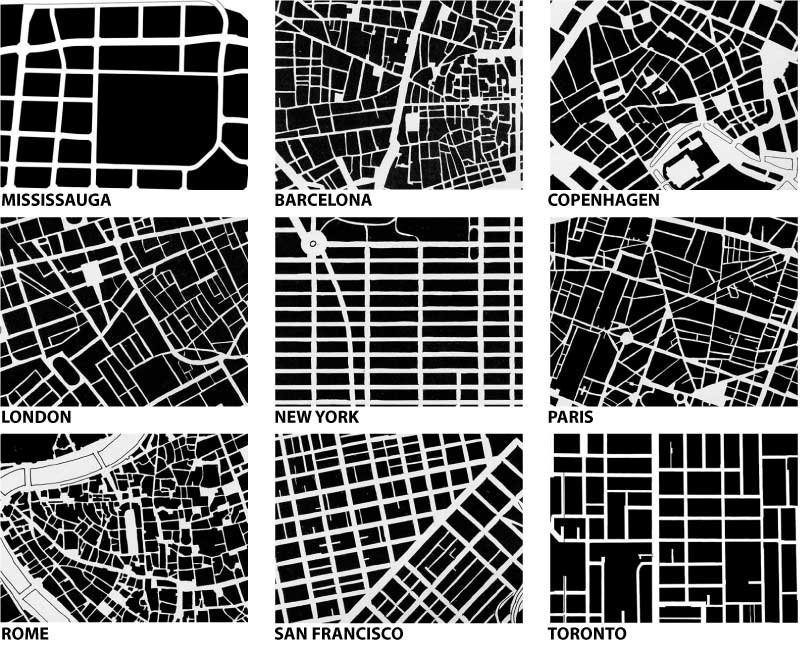
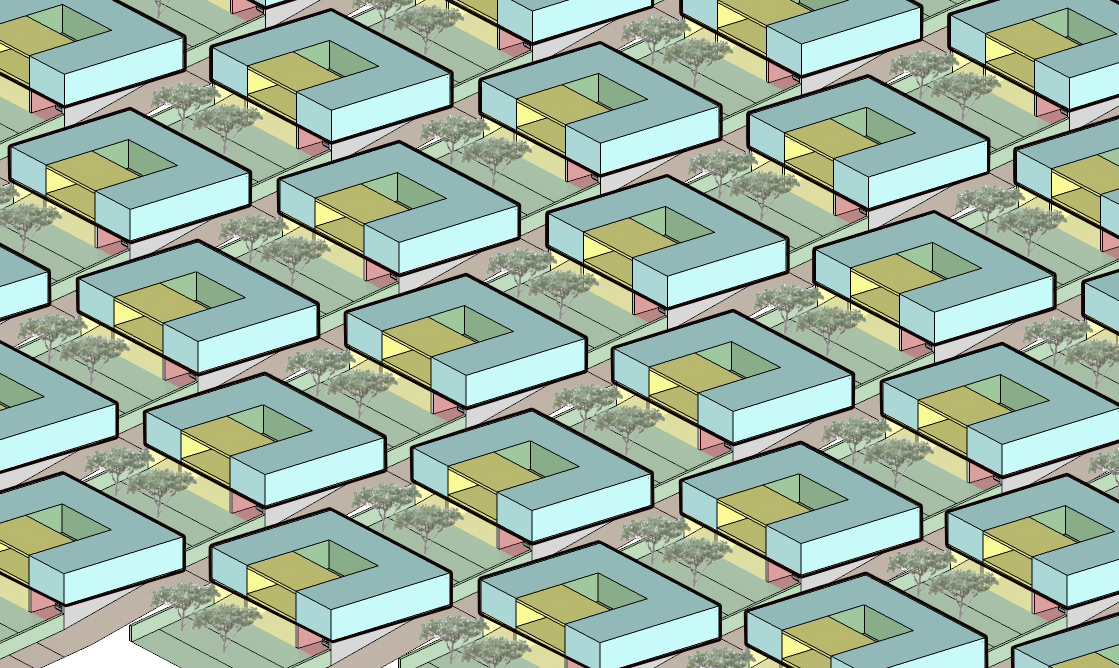
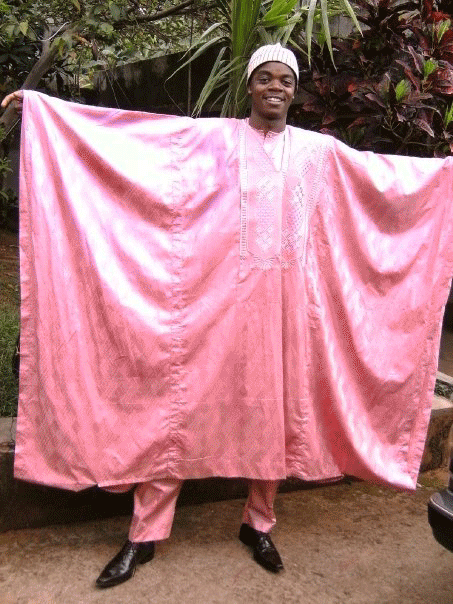




141sie_acq_FAKE POSTER FOR A FAKE EXHIBITION
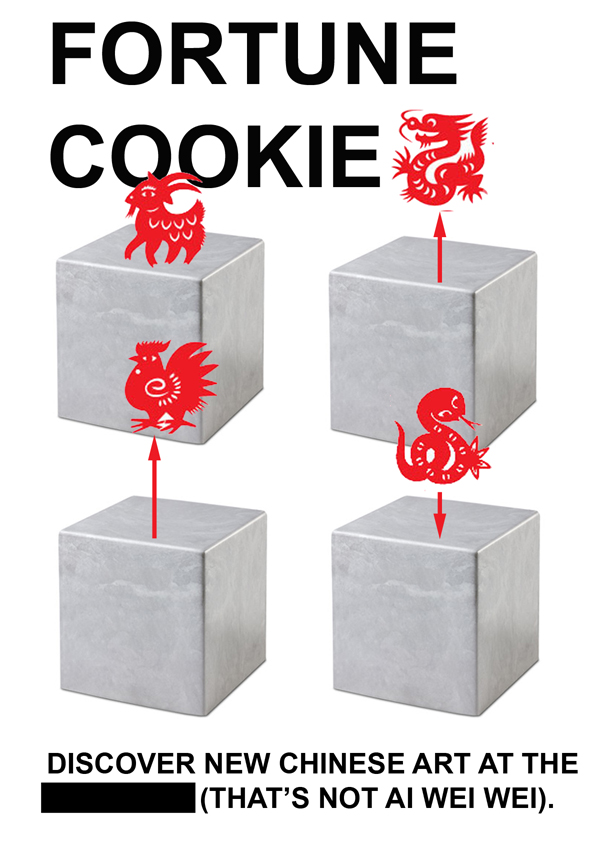 Come predict the future of contemporary of chinese art. Forecast: who will be the most popular artist? But is the Fortune Cookie really Chinese – or does it even matter if the ideological association is strong enough? SuperDry is perceived of as a Japanese product but is actually a British manufacturer that combines vintage Americana fabrics with pseudo-Japanese text.
Come predict the future of contemporary of chinese art. Forecast: who will be the most popular artist? But is the Fortune Cookie really Chinese – or does it even matter if the ideological association is strong enough? SuperDry is perceived of as a Japanese product but is actually a British manufacturer that combines vintage Americana fabrics with pseudo-Japanese text.
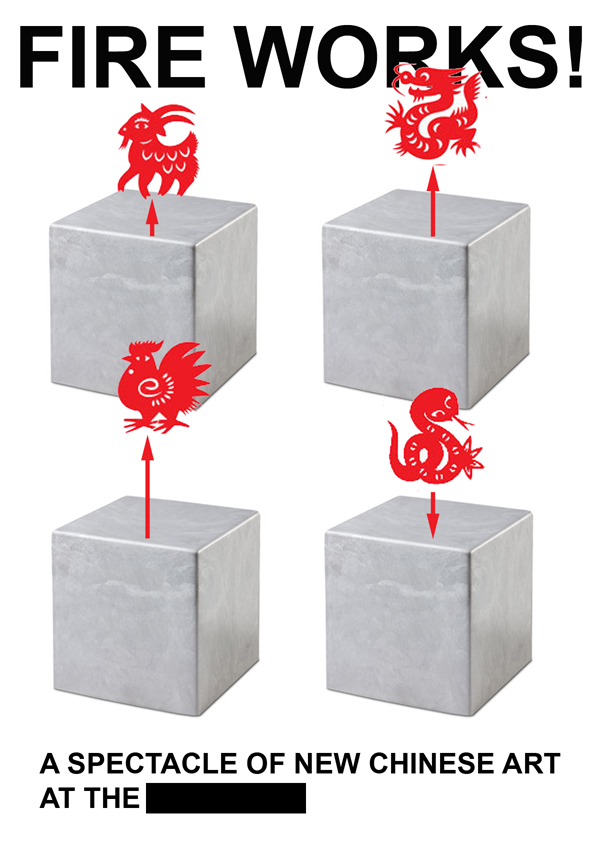
 Fire Works? Exhibition re-opens November 5th. Drawing by sparkler photographic workshops. Chinese lantern skies. 8? new chinese artists will inspire you to create your own artistic 8! creations. Will it be a double vision of London Eye as a number eight, a double Big Ben…
Fire Works? Exhibition re-opens November 5th. Drawing by sparkler photographic workshops. Chinese lantern skies. 8? new chinese artists will inspire you to create your own artistic 8! creations. Will it be a double vision of London Eye as a number eight, a double Big Ben…
141SIE_Africarchitecture©.
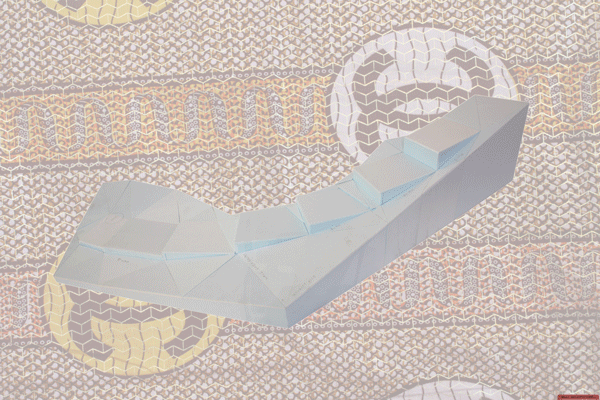 Africa. Ah, yes. At 30 million km² it covers 6% of the world’s surface and therefore 20% of its land. Africa is recognised as big but it’s still relatively unknown to the West, decades after Conrad’s Heart of Darkness and months after Adjaye’s Africa. LOL. Afrika is a continent of 14% of the world’s population over 54 countries. Compare with Europe: 2% Earth, 7% Land, 11% of Earthlings. 50 countries. Africa is not just bigger and but it’s also older.
So how is Joe Architect supposed to understand ‘foreign local culture’ which might be deemed important when it comes to designing housing? Increasingly today, there’s no site visit. Instead you get a geo-tagged topographical survey augmented by desktop jet-setting. Google Africanism. Wiki Free Town. A rapid sentence-image digest.
Africarchitecture© is about recognising some things will always remain unknown.
Africa. Ah, yes. At 30 million km² it covers 6% of the world’s surface and therefore 20% of its land. Africa is recognised as big but it’s still relatively unknown to the West, decades after Conrad’s Heart of Darkness and months after Adjaye’s Africa. LOL. Afrika is a continent of 14% of the world’s population over 54 countries. Compare with Europe: 2% Earth, 7% Land, 11% of Earthlings. 50 countries. Africa is not just bigger and but it’s also older.
So how is Joe Architect supposed to understand ‘foreign local culture’ which might be deemed important when it comes to designing housing? Increasingly today, there’s no site visit. Instead you get a geo-tagged topographical survey augmented by desktop jet-setting. Google Africanism. Wiki Free Town. A rapid sentence-image digest.
Africarchitecture© is about recognising some things will always remain unknown.
